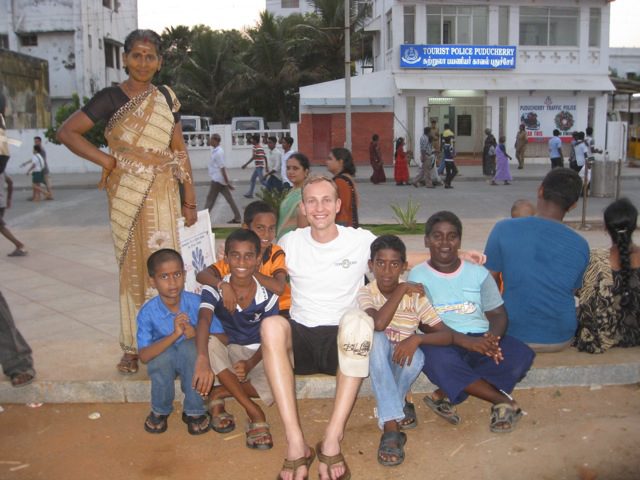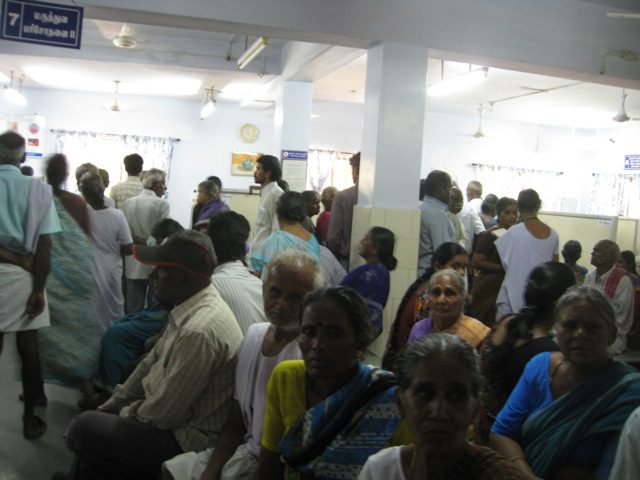Arrival at Aravind Eye Hospitals
I had been looking forward to visiting India for quite a while and therefore was excited about this IBD posting. But in the rush to finish spring semester projects at Haas and prepare for my summer internship, I simply hadn’t had time to prepare much for this trip (beyond the project itself). So touching down in the scorching heat of Madurai after nearly 30 hours of travel was a bit overwhelming as we drove to the guesthouse. I started to feel more comfortable with a quick walk towards the city center, actually. The bustle and constant honking from trucks and motorbikes, the smells of hot oil and spice from the food vendors, the smiles of local kids who wanted to test out the three English phrases they know (all at the same time), all brought a familiar, human element to the scene. Of course, it goes without saying that the vast majority of people here are poor; you cannot help but confront that fact at every turn. I spent nearly four years working in poor countries in Latin America and the Caribbean before coming back to Haas. I began to realize that the poverty in India is not terribly different from what I had seen before. Rather it’s the sheer scale of problems that one cannot help but notice. That was made even more real for me Monday morning when we first set foot inside the Aravind Eye Hospital in Madurai.
Our guide was our main client contact, Deepa, who clearly commands enourmous respect from the hospital staff and is incredibly friendly, soft spoken, and genuinely committed to Aravind’s mission. (She’s also been a saint helping us organize our work plan and visits to other hospitals.) What’s most amazing about Aravind is how they’ve designed their system to address the needs of so many people with so few resrouces. The hospital is literally overflowing. There’s hardly room to stand and observe our first station, patient registration. We step behind the desk only to bump into sari-clad nurses, “sisters,” attending to new arrivals, retreiving meical records, and counseling many half-blind, often illeterate, elderly villagers. This hospital is literally a rock in front of a massive, daily wave of humanity. And the 1,500 – 2,200 daily patients bring roughly two or three guests as well, usually family to help them navigate the process. Thus every ward, every hallway, stairway, corner, nook, and cranney is occupied by someone (even the photos don’t do the scene justice). And Aravind ensures that no patient who arrives is turned away; 60% – 70% of the surgeries they perform are completely free to the patient.
The background that I haven’t provided is that Aravind is a revolutionary pioneer in the delivery of health care, in this case specialized eye care focusing on preventable blindness – a majority of the operations are catarats surgeries. The organization is one of the early adopters of a high volume – low cost model (necessary to meet the overwhelming need in India); perhaps the most amazing part is that Aravind is now recognized as a quality leader worldwide – because the doctors perform so many more eye operations than their western counterparts. They are extremely efficient when it comes to using costly equipment and started producing the replacement lenses locally (in order to cut costs). All in all, they say each surgery costs about $10, compared to nearly $2,000 back home. It’s clear to me immediately that this type of innovative model is necessary to confront the scale of poverty here. And I’m thrilled to have the opportunity to work with an organization like Aravind.
—Brian Busch



